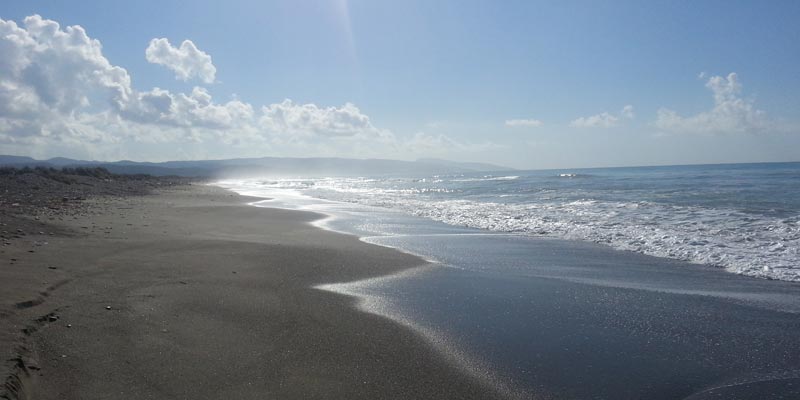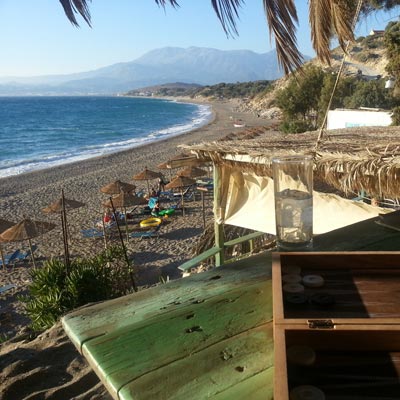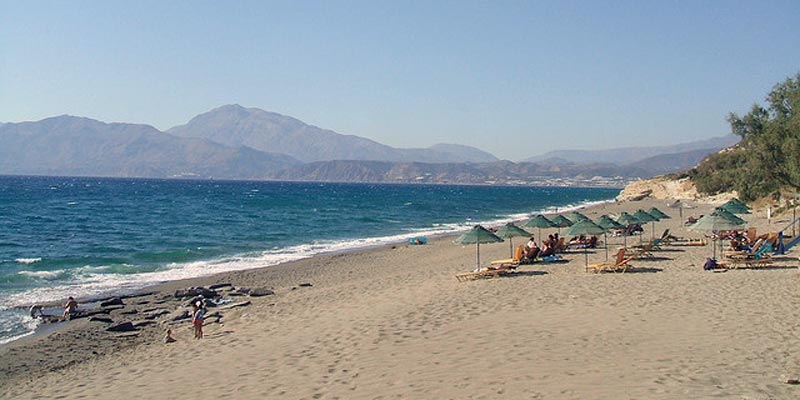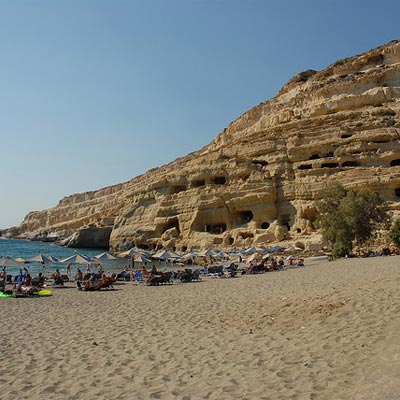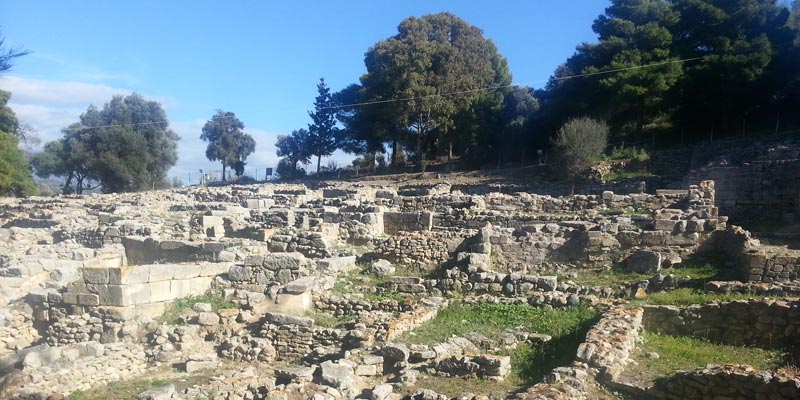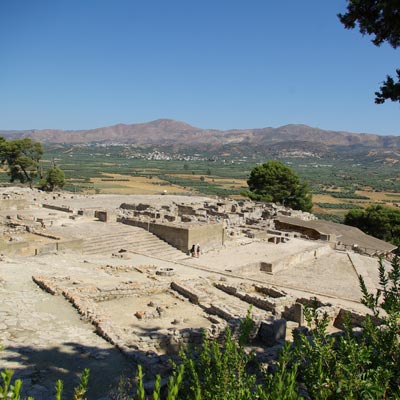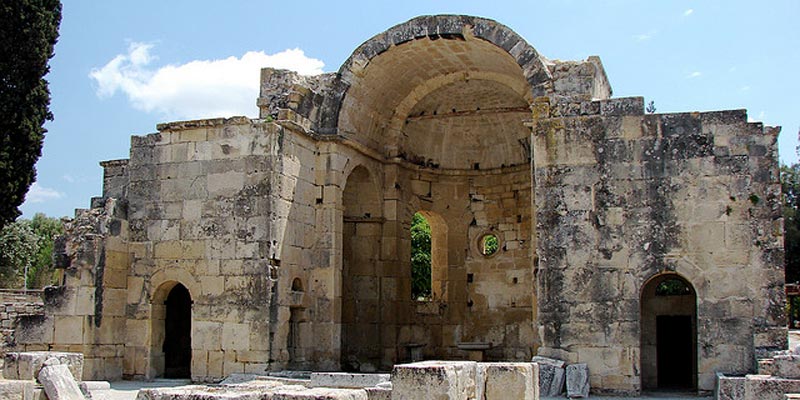Phaistos Palace
Archaeological site
Phaistos is the second in significance Minoan town and palace after Knossos. It was built on a hill overlooking the Messera valley and the Ida, Asterousia, and Lassithi mountains. In mythology Radamanthos – son of Zeus and brother of Minos ruled over Phaistos. The first report of Phaistos is made by Homer in the Iliad as one of Cretan towns which participated in the campaign of the Achaeans against Troy with their leader Idomenaeus.
Excavations, which began in 1884 by F. Walbherr and by the Italian Archaeological School with F. Walbbherr and L’Pernier, brought this Minoan treasure to light. The town was inhabited since the Neolithic period, and prospered during the Minoan period. An earthquake destroyed the first palace. On its ruins, a bigger and more impressive palace was built. Most of the restored buildings belong to this period and many parts of the earlier palace have been excavated. The town keeps its prosperity during the Mycenaean and Geometrical era, and remained a rich, powerful and densely population independent town with its own currency. Two seaports Matala and Kommos were close by. During historic times Rea’s temple was built to the south of the old palace. In the middle of the second century B.C. the town was destroyed and lost its power to Gortys. Among the archaeological findings is the most famous Phaistos disc – which script has not been deciphered, as well as many multicoloured Kerames style vases.

